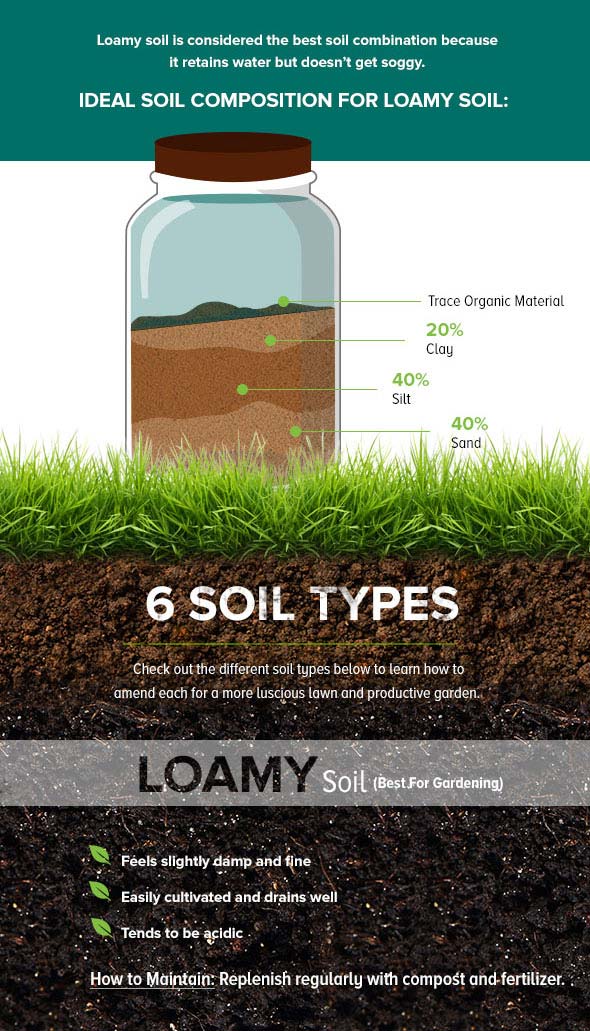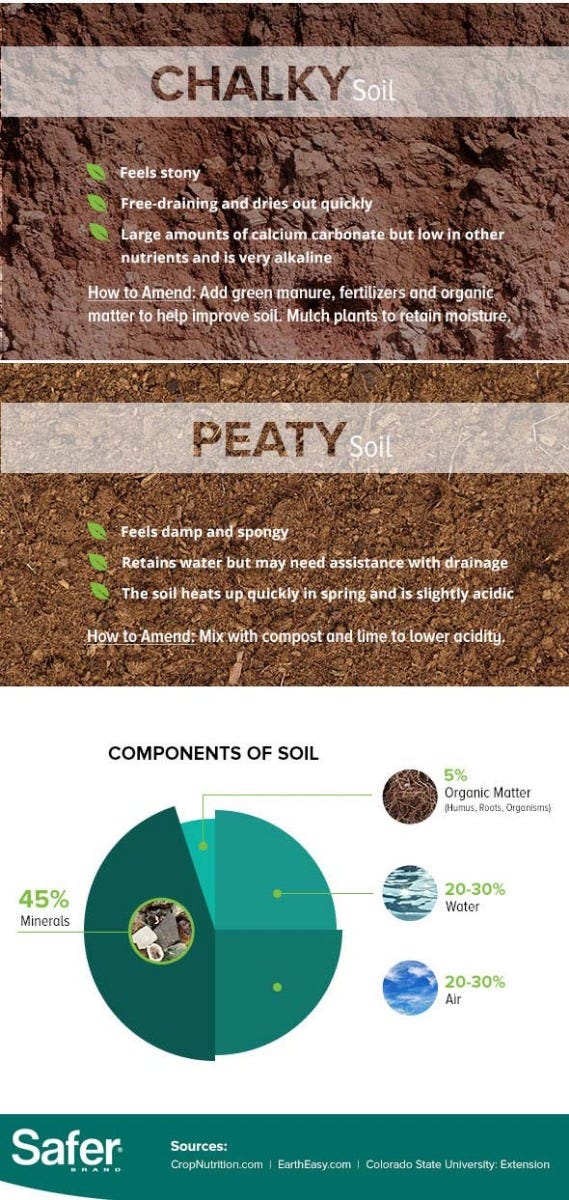
Do you have ugly brown spots of grass in your lawn?
Learn how to fix dead grass with this soil jar test to figure out which soil amendments you need to add to your lawn.





This work is licensed under a Creative Commons Attribution-NoDerivs 3.0 United States License.
What Soil Type Do I Have? DIY Soil Jar Test
Whether you are trying to fix dead grass in your lawn or if you are starting a garden, it’s important to understand your soil type. There are six soil types that differ depending where you live. Loamy soil is considered the ideal soil type because it retains water, holds nutrients well and yet allows for appropriate drainage. The soil is dark in color from a high amount of organic matter and if you pick up a handful and squeeze wet loamy soil it will slightly crumble but still stay in a loose ball.
Clay, silty and sandy are three other common soil types and the right combination of them makes up loamy soil. Sandy soil particles are large which causes water and nutrients to drain too quickly out of the soil. When doing your soil jar test, sandy soil will be the first layer to settle at the bottom and should make up 40% of the jar’s soil. Since sandy particles are heavier, you’ll begin to see that layer a few minutes after you set the jar down to settle. It’s easiest to see all the layers if you mark each layer as they settle. Silt will settle on top of the clay particles and usually looks darker in color. Your silt layer will settle in about 4-5 hours and should make up around 40% of your soil. Clay soil has tiny particles which creates poor drainage in the soil if you have too much of it. Since clay particles are the smallest of the three soil types in your jar test you’ll see the layer on top. You should also have some trace amounts of organic matter floating just over the clay layer or at the top of your jar.
To start your soil jar test, you’ll need a shovel, water, ruler, clear quart-sized jar with straight sides if possible, and a spoonful of dish detergent (powder works best, but liquid is fine too).
We also included two other soil types in the infographic above that you won’t be able to determine with the soil jar test: Chalky and Peaty Soils.
Chalky soil (a lime-rich soil) is common in Britain. It is very alkaline and usually shallow with lots of stones making it free-draining and difficult to retain nutrients. To see if you have chalky soil, add a handful of a dirt to a jar filled halfway with vinegar. If the soil froths that means it contains calcium carbonate (chalk) or lime.
Peaty or peat soil is usually rich in organic matter and is very acidic. This soil type is seldom found in gardens or lawns but you can do a simple test to see if you have it. Dig about 6 inches down in your soil and scoop out a handful of dirt. Since peat soil retains moisture it should feel very wet.
How to Amend Soil
Once you find out which soil type you have you can determine the best soil amendment to make it more loamy or which plants/grass would grow best in your soil type. For any soil type, you should still add fertilizer and compost to keep the soil nutrient rich and balanced. On top of annual lawn and garden care, we’ve listed the various soil amendments in the infographic above.
For example, if your soil jar test shows you have silty loam soil (15% clay, 65% silt and 20% sand) you might choose to amend with ground and aged pine bark or composted vegetables. You can also cater your gardening to fit your soil type. For silty loam soil, water more than you would with clay soil but less than with sandy soil.
If you have sandy loam soil (15% clay, 20% silt and 65% sand) you can amend the soil with biochar or add mulch to help the soil retain moisture. Certain plants or grass types might also grow better in some soils than others. If your area is better for cool-season grasses, consider Fescue if you have sandy soil (and especially if you live in an area with drought). For those with sandy soils in a warmer climate, Zoysia and Bermuda or grass types that do well with sandy soil.
Understanding your soil type will help you determine the right amendments to create a healthy lawn and garden. Do this simple mason jar soil test each spring to find your soil type as it might change slightly ever year.



